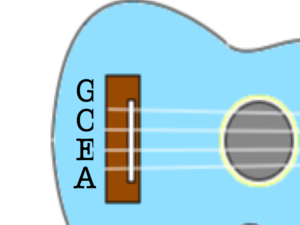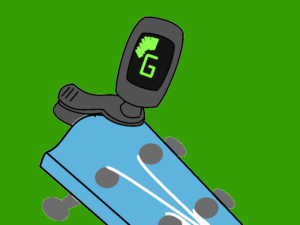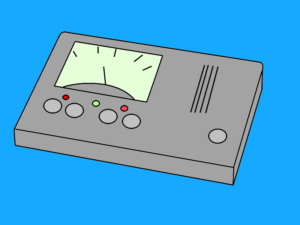So you’ve just bought a lovely new set of ukuleles to use in your classroom… How are you going to get them in tune? How are you going to get them to stay in tune? Don’t worry, we’ve got you covered…
They're new, why do they sound so bad?
Ukuleles are usually delivered with the strings loose. This helps to protect the instrument during transit, but it does mean a lot of string winding when you are faced with thirty of them. As the strings are new they still have a certain amount of elasticity to them, they are also likely to slip back through the tuning gears. This means that even with high quality strings you can expect the first string to be back out of tune by the time you have finished the last. Giving each string a little gentle tug away from the ukulele before you start can help a little but you should still expect them to go out of tune very quickly to start with.
It may be time consuming but if you can we strongly suggest tuning the whole set of ukuleles a couple of times before you hand them over to a class.
Do they need tuning every lesson?
In a word, yes! Temperature and humidity changes will affect a ukulele’s tuning. Over time the strings will naturally slip back and de-tune. Then of course there are the pupils. However hard you watch them and no matter how many times you tell them there is always one, who can’t resist fiddling with the tuning pegs!!
How to tune a ukulele:
You may already know how to tune a ukulele, in which case you might want to skip further on. If you don’t, here is a short guide.
We are going to use standard C6 tuning. There are other ways of tuning a ukulele but the vast number of resources you will find (including ours) use C6 so its probably the best place to start. C6 tuning looks like this:

If you want to remember it easily, just think: Goats Can Eat Anything.
Using a Tuner:
There are three main types of tuner, lets go through them quickly:
Clip on Tuner

These cheap and simple tuners clip on to the top of your ukulele. Using sensors within the tuner they can work out what note your ukulele is playing. Because they don’t rely on conventional microphones these tuners are great for use in a noisy classroom as they won’t be put off by background noise. Usually a simple display will show you which note you are closest to and if you need to tighten or loosen the string. (Make sure you have it set to ukulele or chromatic, otherwise it won’t display the right notes.)
Regular Microphone based tuner

This type uses a microphone (sometimes there is an input if your ukulele has a built in pickup) to listen and analyse the sound of your ukulele. They are more likely to be confused by background noise, but they will work well in a quiet environment.
Apps

Smartphones and tablets can easily be adapted into a tuner using apps. These just use your device’s own microphone. Apps can be incredibly accurate as well as having several other useful features such as playing the desired pitch out loud or built in metronomes. As with any other type of app these are available for free but you will only get the more advanced features from paid versions.
But tuning all those ukuleles takes ages, right?
Not nessecarily, here are a few tips to help speed things up:
1. You don’t need a tuner for every ukulele.
If you have one ukulele in tune and a fairly good ear you can use your first ukulele as a reference for all of the others.
2. Get them out of the cases.
I find that by far the most time consuming bit of the tuning process is getting all of the ukuleles out of the cases first, if you can store your ukuleles on hooks or on shelving out of the cases you have already saved yourself a huge amount of time.
3. Use your pupils.
Tuning a ukulele is not that easy. Depending on the age of your pupils you may be able to train a few of them to tune the set for you. With younger pupils you can at least set them tasks such as taking them out of cases.
4. Don’t worry if they’re not all perfect.
When in a real rush I usually give all thirty ukuleles a quick strum just to find the worst. If they sound close enough then they won’t get tuned every lesson. As long as you sort out those with a string really out of tune, over time you should be able to keep the whole set within reasonable limits.
You'll be thankful you put the effort in.
A whole class of ukuleles can sound great really quickly, with our whole year course your pupils will be playing both melodies and chords within the first lesson. If your ukuleles are in tune then you’re on to a winner.
More from The Ukulele School

